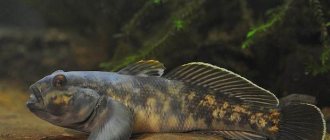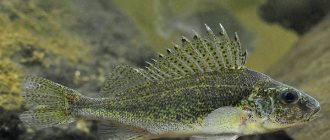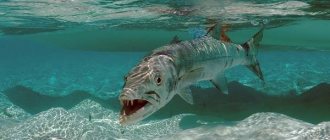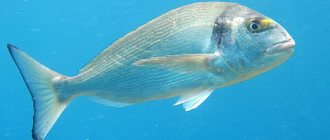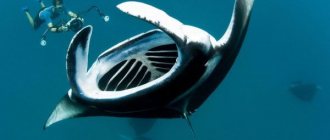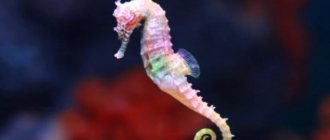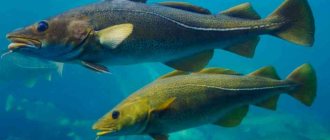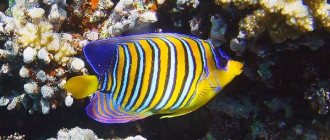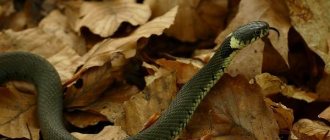Would you like to have an exotic and beautiful fish in your aquarium? Then pay attention to the surgeon. The surgeon fish (lat. Acanthurus Forsskål) is very beautiful, looks great in a reef aquarium and does not require very complex care. On the other hand, surgeonfish are not recommended for beginners and can be dangerous.
Surgeon fish
On a note ! Tangs are one of the most common and favorite fish in the marine aquarium. Spectacular and rather unpretentious pets belonging to the Surgical family.
Appearance and varieties of surgeon fish
The body of surgeons is ovoid, laterally compressed. The length of the fish can reach 40 cm, but among the variety of species there are also huge specimens, the size of which is close to 1 m. As for the size of the surgeon in the aquarium, it is, as a rule, no more than 16-18 cm. The distinctive features of the surgeon are a sloping forehead, long anal and dorsal fins. Thanks to their large eyes, the fish are excellent at navigating in dark waters.
Blue tang (royal) Paracanthurus hepatus
The Surgical family includes more than 70 species. Let's take a look at those that are most popular among aquarists.
Table. Popular types of surgeon fish.
| Name, photo | Short description |
| Surgeon Blue Royal | An interesting feature of this species is that its representatives hide in crevices and lie on their sides while sleeping. |
| Yellow surgeon | Very attractive, brightly colored. Thanks to this, it is very popular. |
| Surgeon blue white-breasted | The body is tall, the coloring is very characteristic: the head is black, there is a white ring around the lips, and the rest of the body is a bright sky blue color. |
| Surgeon clown | It is considered the most aggressive species of surgeon fish. The color is variable: the main body color is yellowish or gray, there is a white stripe along the edge of the tail, and a black tail spike. |
| Sailing surgeon | A large fish with huge anal and dorsal fins (when extended, they are comparable to the body). The color scheme may vary, but the characteristic pattern is always present. |
| Arab surgeon | It got its name due to its characteristic steel color. It looks luxurious, with thin black stripes on the head and sides. The fish is known for its extremely aggressive disposition, which is what many aquarists like. |
| Japanese surgeon | A fish with a bronze-brown (sometimes blue) body. Yellow stripes extend from the tail, and a large orange stripe extends from the dorsal fin. Able to adapt quickly. It feeds mainly on plant matter. |
Note ! In general, all surgeonfish species have a similar appearance. Only the color can be different - estuary, red, blue, with ornaments and shades... On the sides there are sharp, dangerous spikes, similar in appearance to a razor blade. It is because of this that the fish are called surgeons (another name for the thorn is a surgical scalpel).
Surgeon sohal Acanthurus sohal
If there is no danger nearby, the spines are in a special pocket, but if necessary they are spread out for protection.
Another feature is the presence of sharp thorns
At rest, the spikes are hidden in special recesses
Kinds
Of the variety of marine life, the most famous are:
1. Blue surgeon fish . Called royal or hepatus. The color is bright blue with small dark spots located on the body. The tail is black and yellow. Individuals are distinguished by activity and mobility, and are shy. They love places to hide and good lighting.
2. Arabian. This species is the most aggressive and largest representative of the surgical species, it can reach a length of up to 40 cm. The body of the sokhala has a steel tint (without a pattern) and dark-colored stripes located on the sides. All fins are black with blue trim.
There are orange spots near the sickle-shaped tail with elongated outer rays and at the gill covers. Lives in the Red Sea, easily recognizable by the yellow spot located in the middle. Poisonous spines are at the base of the tail.
Younger individuals have a color similar to older ones, but less bright. Sexual dimorphism is not expressed. The main habitat is the Arabian Peninsula (Red Sea), the Persian Gulf.
They stay at a depth of up to 10 m. The fish live either alone or in harem groups. The territory in which the females feed is guarded by the male. It feeds on algae, worms, crustaceans and other invertebrates.
3. White-breasted. Popular reef inhabitant. The blue surgeon fish is bright blue in color, but its head is black. The fin located on the back is yellow, the anal fin is white. The tail is short in length and has two black stripes (longitudinal). It is a non-predatory marine life that feeds on algae on reefs.
4. Zebrasoma (sailfish). There are 5 varieties, the brightest being the yellowtail. Its shape is similar to an irregular triangle of blue color, the dots on the stigma are black. The fins are large and wide, the tail is yellow. Prefers to live in rocks, coral reefs, and rocky lagoons. Thanks to the stripes on the body, there is a good contrast with the fins and yellow tail.
5. Fox fish. The body of Pieds is small (20-50 cm), oval, laterally compressed, light in color (yellow, light brown) with black stripes. The nose part is elongated, which is why the fish got its name. Yellow color predominates on the tail and fins. When an individual is irritated, it can change the color of its scales, and black dots become noticeable on its body.
Almost all fins are filled with poison, which is supplied from the glands. Habitat Philippines, Indonesia, New Guinea and Caledonia. The fry form large schools near the reefs, while the adults live in pairs or alone.
6. Moorish idol. Lives in the Pacific and Indian Oceans. The body is flattened, large, covered with small scales. The dorsal and caudal fins resemble a triangle with one elongated side. The stigma is elongated and ends in a small mouth.
7. Olive surgeon . The fish is medium in size, has an elongated body and elongated pigtails of the outer rays on the caudal fin. The front part is lighter compared to the back. Large individuals are dark brown, gray or brownish in color.
Behind the eyes there is an oblong orange spot with a violet edging. Size up to 35 cm. The species is widespread in the Indian Ocean. It lives at a depth of 20-45 m in areas with a sandy or rocky bottom, in reefs or lagoons. Lives alone, in pairs, in groups. It feeds on unicellular algae and detritus.
8. Yellow-eyed Ctenochet. It has a wide yellow ring located around the eyes. The color most often ranges from light green to dark brown. There are blue stripes throughout the body, and small bluish dots on the throat and head. Fins (pectoral) are yellow. Maximum size – 18 cm. Distributed in the waters of the Hawaiian Islands. Found on the outer slopes of reefs and in deep lagoons. It lives at a depth of 10-50 m. It feeds on algae and is active during the daytime.
9. Striped tang . The body of the zebra fish is gray with an olive or silver tint, has a characteristic pattern and five vertical stripes (black or dark brown). The fins are yellow. There is no sexual dimorphism. Size up to 25 cm. Distributed in the Indian Ocean. It settles on the outer slopes of reefs and in lagoons with a hard bottom. Gathers in large aggregations (up to 1000 individuals).
Habitat in nature
Surgeon fish live in the waters of the Red Sea, the Great Barrier Reef, the Pacific Ocean in New Caledonia and Samoa. They give preference to the outer slopes of coral reefs, settling between corals and in rock crevices at a depth of up to 40 m. As for the fry, they usually live in schools, while adults live alone or in pairs.
Seeing a flock of surgeons in person is an unsurpassed aesthetic pleasure
The surgeon in nature feeds on plant foods - detritus, algae - and aquatic animals.
Nutrition
Representatives of the species are herbivores, feeding on algae, zooplankton and detritus. If there is not enough food or there is too much competition, they gather in flocks to search for shared food. Such “trips” for food collect up to several thousand fish, which after feeding disperse to their usual habitats. Also gathering in flocks occurs during the breeding season.
Expert opinion on content complexity
Experienced aquarists, after numerous observations, have concluded: the most difficult stage of keeping surgeons is the moment of adaptation to new conditions after acquisition . This is explained by the weak immune system of fish. But when the adaptation period is over, there will be no particular difficulties in caring for this species.
Japanese surgeonfish (bronze) Acanthurus japonicus
What does it eat?
The surgeon is not a predator: his mouth is small, and his strong jaws and sharp small teeth are designed for plant food.
According to the diet, three groups can be distinguished:
- Those who feed on filamentous and microalgae. Together with food, these fish swallow sand, which helps the food mass to grind, getting into the gizzard. This is characteristic of the olive surgeon, dark, mate.
- They feed on common and calcareous algae, as well as invertebrates crawling on the surface of coral ledges. The sharp teeth of the surgeon easily gnaw and clean coral branches and the upper layers of peripheton - algae and microorganisms. This group does not have a muscular stomach. Example: Minke whale, Pearly white-spotted, Blue golden-backed tang.
- Those who eat the vegetative bodies of algae do not disdain the remains of invertebrates, and at the same time plankton. An example is the white-tailed tang.
In the event of a shortage of food resources, individuals gather in schools to collectively search for food.
Yandex pictures
Reproduction of surgeons
In an aquarium, it is quite difficult to obtain offspring from a surgeon fish, but there are known cases of successful hatching of fry. To achieve results, it is necessary, first of all, to create a favorable atmosphere as close as possible to the natural environment of surgeons. The huge volume of the aquarium plays an important role in this, which is often extremely difficult to achieve at home.
Vlaminga rhinoceros Naso vlamingii and doctor wrasse
On a note ! The surgeon reaches puberty after one year. But at the same time, sexual differences are not pronounced: a male can be distinguished from a female only during mating (his color becomes paler).
After mating, the female lays about 30,000 eggs, each less than 1 mm in diameter, on wide algae. Embryonic development continues for several days. Surgeon fry, unlike adults, are almost transparent and do not have poisonous spines at all. Phytoplankton should be taken to feed the fry.
Surgeon
Why is it called that?
Thanks to these spines, in a “combat” state, sharp as scalpels, the fish is called a surgeon.
While nothing threatens her, the spines are hidden in special recesses in the body, covered with bright orange covers, which can be mistaken for an extra pair of fins. But in case of danger, the spikes extend and become perpendicular to the body. When attacking, the surgeon quickly rushes past the enemy, striking him with a poisoned tip.
Interesting fact: tourists vacationing on the sea coasts most often turn to doctors because of cuts on their legs caused by surgeons.
Yandex pictures
Reviews from aquarists about the surgeon fish
Konstantin Skitetsky, review of the blue (royal) surgeon:
“A peaceful and good fish, has a beautiful color, loves to sleep in a hole in the stones. Eats almost everything, does not touch other fish. Although occasionally it may be possible to drive the same surgeon.”
Victor Sotnichenko, review of the blue (royal) surgeon:
“It has a beautiful color, especially in good lighting. The behavior of the fish is uninteresting and even boring, it just swims around the aquarium back and forth. I don’t know about other surgeons, but mine is quite boring, especially when compared with predators - they are much smarter and more interesting in behavior. I recommend purchasing only to those who like screensaver fish (that is, those with a background function).”
Olga Alekseeva, review of the yellow-tailed zebrasoma:
“Beautiful and neat zebrasoma. He loves to eat salad, which also replaces frozen food. Occasionally suffers from attacks from the yellow zebrasoma."
Surgeonfish are large marine creatures, often with complex personalities. They are so freedom-loving that they do not breed in captivity. However, watching them is always a great pleasure!
Danger to humans
The harmless appearance of a bright fish frolicking in shallow water often evokes a desire to get to know it better; Beginning divers sometimes forget why it got its name. Why is this meeting dangerous for a person?
The surgeonfish looks slow and even clumsy. But strong pectoral fins help her, if necessary, to instantly turn around and attack, and for no apparent reason. The spikes rip through safety shoes and cause deep cuts to the person. In addition, they are saturated with toxic mucus, which, when it gets into the wound, causes pain and inflammation.
In addition to intoxication and infection, a victim who does not receive timely medical attention is at risk of severe blood loss. If the attack occurred far from the shore, blood that gets into the water can attract sharks to the scene.
Therefore, long before entering the sea for the first time, it is useful to learn about the habits of the local fauna, so as not to get close to its potentially dangerous representatives.
Interesting fact: surgeonfish are actually very patient. She can withstand the pestering of annoying tourists for quite a long time, sailing to a safe distance for herself. But he does not tolerate attempts to stroke himself, as well as other familiarity.
Yandex pictures
Diseases
Surgeon fish are naturally endowed with high susceptibility to many diseases. Particularly dangerous:
- Ichthyophthiriasis - whitish spots suddenly appear on the gills and fins, which very quickly spread to the body.
- Oodiniosis - at the beginning, the fish swims up to the reefs and seems to “itch” against them. Then a gray coating appears on the body and fins. The radial tissue of the fins and the cover are quickly destroyed, and mucus formation is observed.
There are also less dangerous diseases: fin rot, purulent erosion of the head.
Breeding blue dolphins
Reproduction of blue dolphins will be successful if the owner can correctly distinguish between male and female. But this is not easy to do - both the male and the female have a fatty lump on their head. It is believed that males have a larger cone, but this is at an older age, so it is not easy to differentiate fish among young fish. Also, according to the observations of aquarists, males have a more intense color. A more obvious sign is the male's fat pad turning yellow before spawning.
The best family composition for blue dolphin fish will be polygamous aquariums, in which there are from three to six females per male. Fish become sexually mature when they reach a body length of 12-15 cm, already then you can take care of sexual differences and place the selected individuals in a separate aquarium for breeding.
The male chooses the breeding site himself, digging a hole near a stone in a secluded place. After this, the female lays eggs, which the male then fertilizes. The female carries the eggs in her mouth; on average, from 20 to 90 eggs are hatched per clutch, the period is 2-3 weeks. The period depends on the water parameters. Under comfortable conditions, the female releases the fry, but in case of danger, she can again hide them in her mouth. The food for the babies is Artemia nauplii; the dolphins grow quite slowly.
Compatibility
Most species of the family prefer a solitary existence, and react aggressively to other fish and relatives. However, there are non-conflicting species that do not pay attention to their neighbors, spending their time searching for food and looking at the scenery, such as the white-breasted blue and blue species. Good neighbors for them will be:
- perches;
- angels;
- Antias.
It should be noted that, contrary to popular belief, surgeonfish do not get along with seahorses, so the phenotypes cannot be populated together.
